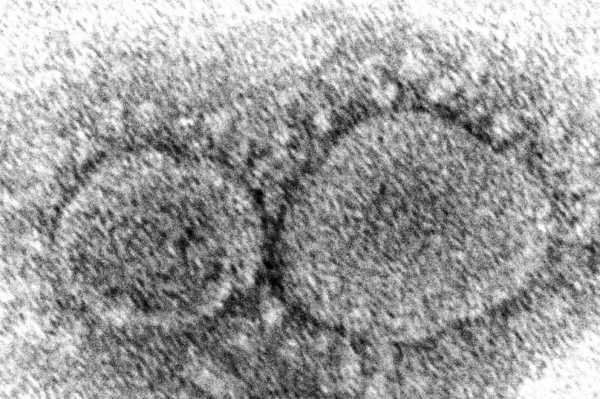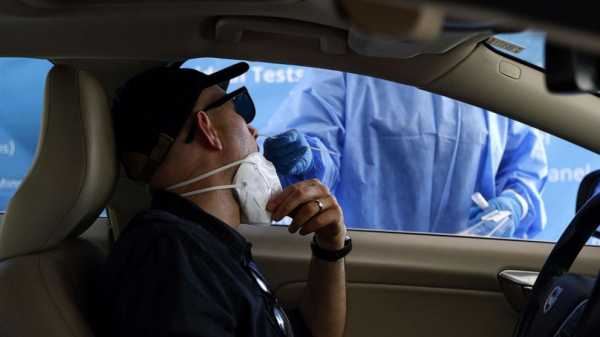More health officials across the U.S. are reporting new cases of the COVID variant BA.2.86.
On Thursday, a genome sequencing team at Houston Methodist Hospital said it had identified the first case in Texas, a member of team wrote on X, formerly known as Twitter. On the same day, Ohio Department of Health Director Dr. Bruce Vanderhoff confirmed that one case has been detected in his state.
These states join Michigan, New York and Virginia, according to health officials and the open global genome sequencing database GISAID.
MORE: School districts in Kentucky, Texas cancel classes amid 'surge' of illnesses including COVID
There have been hundreds of variants of the original SARS-CoV-2 virus that led to the COVID-19 pandemic in January 2020, but most eventually disappear.
Public health experts around the world are keeping track of BA.2.86 because of its high number of mutations.

This 2020 electron microscope image made available by the Centers for Disease Control and Prevention shows SARS-CoV-2 virus particles, which cause COVID-19.Hannah A. Bullock/Azaibi Tamin/CDC via AP, FILE
"It is starting to spread here in the United States, as well as in other parts of the world. It's clearly contagious, as are all of these subvariants of omicron," Dr. William Schaffner, a professor of preventive medicine and infectious diseases at Vanderbilt University Medical Center, told ABC News. "As we all know, these COVID viruses are not localized just to one country or another. They don't need a passport. They're capable of spreading … and can spread rapidly around the world."
BA.2.86 was the strain first detected in Denmark on July 24 of this year, then Israel, followed by Michigan in August. It has since been reported in Canada, England, France, Portugal and South Africa, according to GISAID.
It has more than 30 mutations to the spike protein — which the virus uses to attach to and infect cells — and is why Schaffner said he and other experts believe it may be contributing to the increase in COVID hospitalizations in the U.S.
Data updated Monday from the Centers for Disease Control and Prevention found hospitalizations rose 18.8% for the week ending Aug.19.
The most recent data from the CDC shows that EG.5, another offshoot XBB, currently makes up a plurality of COVID cases in the U.S.
MORE: Are masks returning? Lionsgate, Atlanta HBCU reinstate mandates amid COVID uptick
"It's possible [BA.2.86] will make a contribution to what's out there, but it may not become the dominant strain," Schaffner said.
This comes as the CDC's advisory committee gets ready to meet on Sept. 12 to discuss new boosters targeting COVID subvariants. The boosters are expected to become available in mid- to late-September.
While it's unclear how well the new boosters will protect against BA.2.86, the current vaccine is designed to target XBB, meaning it could provide decent protection against severe disease and hospitalization, Schaffner said.
Over the next couple of weeks, officials will be monitoring how contagious the variant is and how quickly it's spreading.

A healthcare worker takes a nasal swab sample to test for Covid-19 at a Total Testing Solutions Covid Testing Center in Los Angeles, Aug. 31, 2023.Caroline Brehman/EPA via Shutterstock
One important tool to use could be wastewater data. Wastewater sampling is how officials in New York City detected BA.2.86. Officials said the sample did not come from a local resident, but the variant's presence in wastewater means it's undoubtedly circulating.
Public health experts have previously said wastewater tracking is a good early detection tool for monitoring potential future upticks.
Sourse: abcnews.go.com






